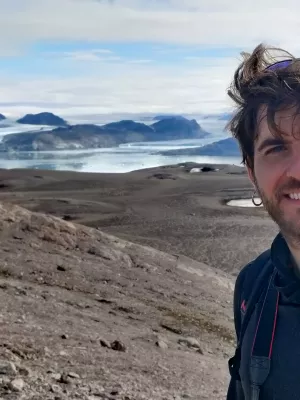
Albert Brangarí
Researcher

The effects of sediment depth and oxygen concentration on the use of organic matter : An experimental study using an infiltration sediment tank
Author
Summary, in English
Water flowing through hyporheic river sediments or artificial recharge facilities promotes the development of microbial communities with sediment depth. We performed an 83-day mesocosm infiltration experiment, to study how microbial functions (e.g., extracellular enzyme activities and carbon substrate utilization) are affected by sediment depth (up to 50 cm) and different oxygen concentrations. Results indicated that surface sediment layers were mainly colonized by microorganisms capable of using a wide range of substrates (although they preferred to degrade carbon polymeric compounds, as indicated by the higher β-glucosidase activity). In contrast, at a depth of 50 cm, the microbial community became specialized in using fewer carbon substrates, showing decreased functional richness and diversity. At this depth, microorganisms picked nitrogenous compounds, including amino acids and carboxyl acids. After the 83-day experiment, the sediment at the bottom of the tank became anoxic, inhibiting phosphatase activity. Coexistence of aerobic and anaerobic communities, promoted by greater physicochemical heterogeneity, was also observed in deeper sediments. The presence of specific metabolic fingerprints under oxic and anoxic conditions indicated that the microbial community was adapted to use organic matter under different oxygen conditions. Overall the heterogeneity of oxygen concentrations with depth and in time would influence organic matter metabolism in the sediment tank.
Department/s
- BECC: Biodiversity and Ecosystem services in a Changing Climate
Publishing year
2016-01-01
Language
English
Pages
20-31
Publication/Series
Science of the Total Environment
Volume
540
Issue
1
Links
Document type
Journal article
Publisher
Elsevier
Topic
- Ecology
- Microbiology
Keywords
- Carbon substrate use
- Extracellular enzyme activities
- Bacteria
- Anoxia
Status
Published
ISBN/ISSN/Other
- ISSN: 1879-1026

